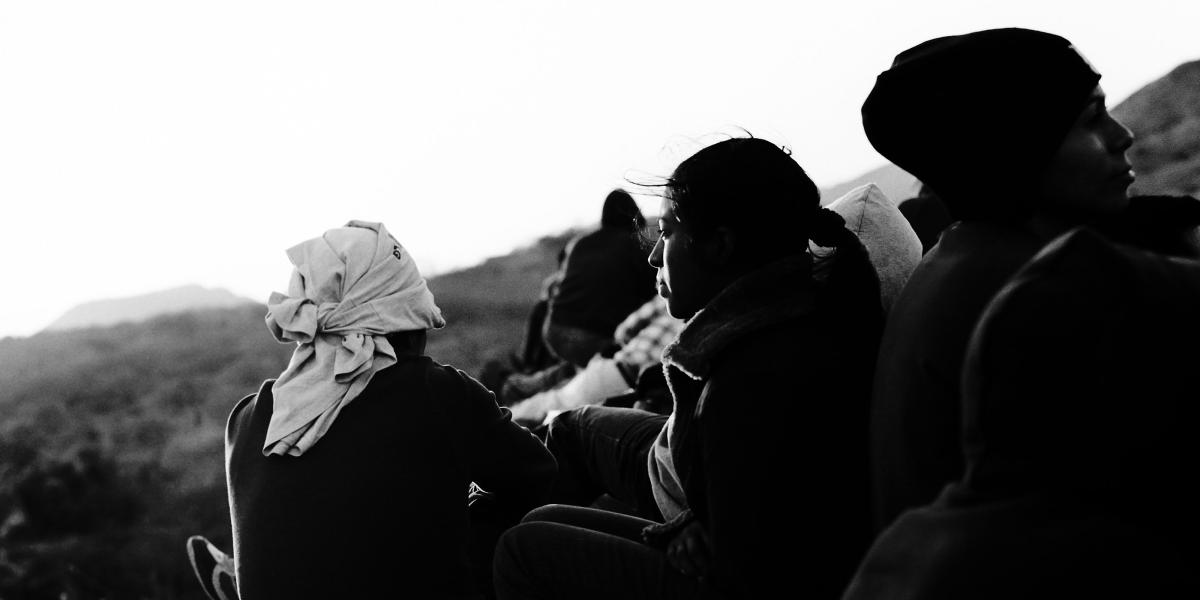Between Two Lives
Carrying only memories of their families and hope for a better life, Central American migrant children stare down the unknown.
AL NORTE
Image at top: Riding a freight train in Oaxaca, Mexico, in 2011, these Guatemalan children are part of a surge of unaccompanied minors migrating to the U.S. Since 2011, the number of Central American children crossing the border has doubled every year—to 90,000 in fiscal year 2014. Whether the children are deported or win asylum, the arrival of so many unprotected children constitutes “a humanitarian crisis,” says Courtland Robinson, PhD '04, associate director of the Bloomberg School’s Center for Refugee and Disaster Response.

THE COYOTE'S PRICE
Denny, a 17-year-old Honduran, pauses on his journey at the Hermanos en El Camino, a migrant shelter in Ixtepec, Oaxaca, in 2009. To cross the U.S. border, he most likely would need to hire a smuggler, or coyote. Smugglers as well as gang members and thieves depend on migration for their livelihoods. “All migrations over time are organized and maintained by market mechanisms,” says Robinson.

NO SHELTER
Junior, a 9-year-old Guatemalan traveling with his mother, waits for an outbound train in Orizaba, Veracruz, in July 2010. Orizaba has no shelter for migrants, so they sometimes have to wait for days for a northbound train.

DIVISION PROBLEM
This border fence, shown in 2012, divides Tijuana from San Diego. How should the U.S. handle the crisis? “The U.S. needs to find humane shelter and protection services for these children,” says Robinson. “We have adequate laws to protect [them] and provide them due process. That is what we need to focus on, rather than give in to alarmist messages about a ‘criminal invasion’ overrunning our borders with disease and drugs. These are children, and they deserve protection.”

REFUGEE POLITICS
Wilter, 17, rests at a migrant shelter in Tenosique in the southern Mexican state of Tabasco in January 2014. He fled his home in Colon, Honduras, after a drunken cousin hacked off his hand with a machete. Wilter knew no one in the U.S.
Does fleeing family violence and the nation with the world’s highest murder rate qualify Wilter as a refugee? The answer hinges partly on politics, says Robinson. “The Cuban population got refugee status handed to them on a plate. Haitians had to fight for it. Central American kids are getting a split reaction.”

HELP WANTED
A Honduran mother and her two sons spend a night at the Casa de la Misericordia, a shelter for migrants run by Catholic priests in Arriaga, Chiapas. Robinson says anti-migrant groups often argue: “We didn’t invite them.” Robinson has a reply: “Yeah, you did.” Americans, he says, “want their landscaping done on the cheap, they want their housemaids cheaply, their chicken processed. A market niche isn’t a gold-plated invitation, but it’s still a welcome sign.”

CHASE THE BEAST
Train hoppers like these children in Tierra Blanca, Veracruz, risk injury, amputation and death, says Casey Branchini, a doctoral student focusing on border issues. In addition, gangs demand money and fling riders off if they don’t pay. Trains are so dangerous that migrants call the northbound train la Bestia (the Beast). Children hazard the trip, says Frankfurter, because they think it is “the only way their lives are going to be better, the only way to escape the crushing poverty and violence.” Risking death seems preferable to giving up hope. How many die en route? “I don’t think we know,” says Robinson.
